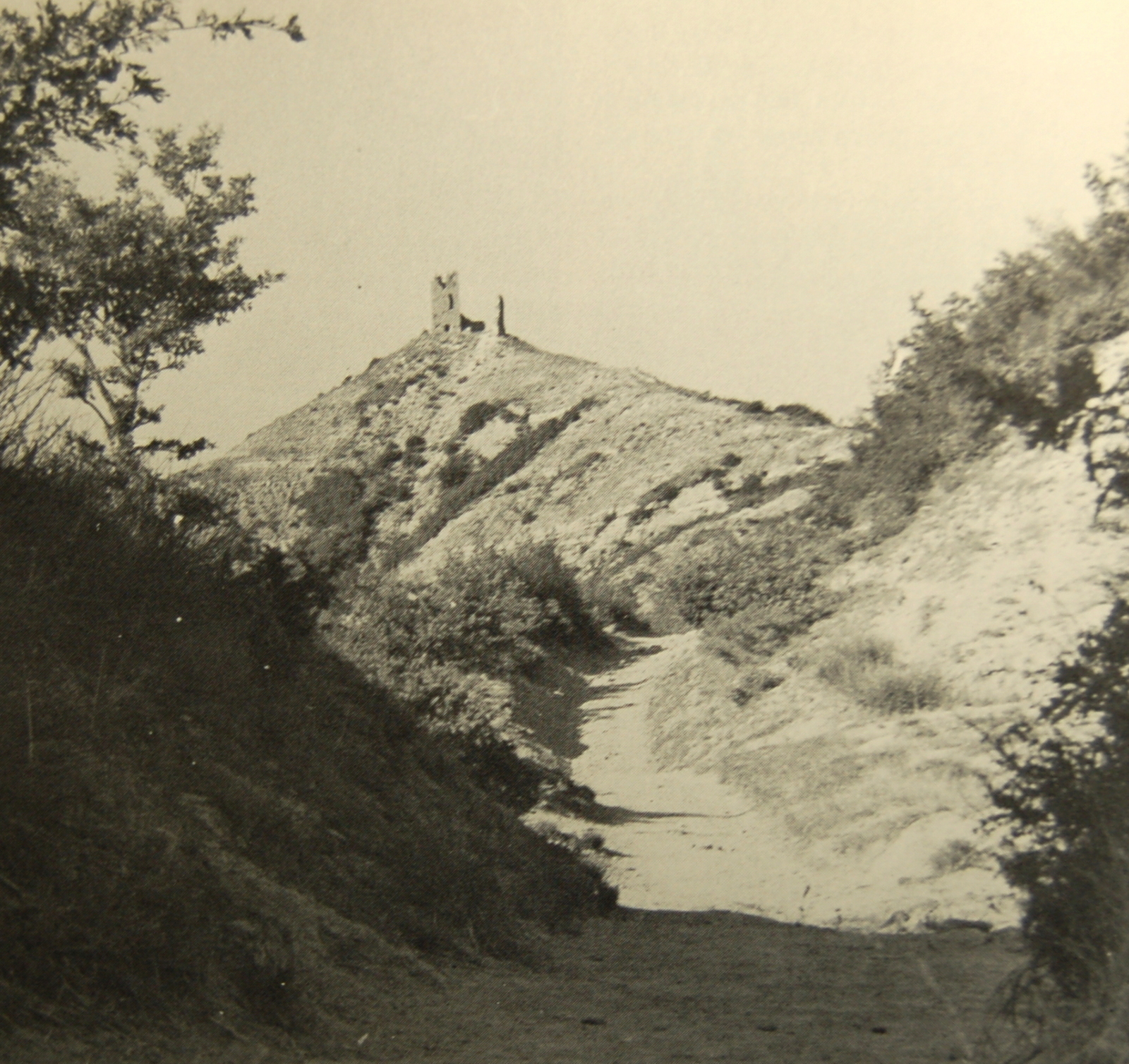Attack on Gothic Line North of Florence
Declassified Headquarters Reports, 350th Infantry, September 1944:
September 21st: Precisely at 0500 the regiment jumped off in the attack towards the northeast. Up to this
time the 85th Division had been encountering stiff enemy resistance on every small knoll and it was
expected that the regiment would see fierce resistance, as the enemy apparently did not fall back as had
earlier been anticipated. As the regiment progressed in the attack, it was bounded on its right by the 66th Infantry
Brigade of the 1st British Infantry Division, and had the 349th Infantry as its supporting team on the left.
As the advance continued, all of the surrounding terrain received sporadic but harassing artillery fire with
Firenzuola, the important road junction town in the valley three miles to the west.
September 22: The entire 1st Battalion Command Post had been captured the previous night. The command post
was established in a house and was attacked by a group of enemy after dark. A fight ensued for thirty minutes
with the enemy and our soldiers fighting from room to room. The command post, with its ammunition exhausted
and being greatly outnumbered, surrendered and was marched to the enemy lines.
[Dad told this story a little differently than the one in the official records. He said that the command
team went into the farm house in question and didn't notice that it had recently been vacated by Germans. It turned
out that the Germans had only temporarily left the house, and returned after the Americans were inside. They did
indeed capture the Americans, and then had an American officer come outside and call to the troops in the
surrounding hillside and demand that they surrender. Dad was among those troops hunkered down in the nearby hills, and the
officer's demands were quietly ignored. - Jim Jr.]
This day again saw the regiment advancing to the northeast. The British on the right were still five thousand
yards to the rear and the regiment on the left was also trailing three thousand yards. The 350th Infantry continued
to be the spearhead of the entire 5th Army in its drive to the Po Valley. As the regiment advanced, it received
considerable medium and heavy artillery fire from 90 degrees.
September 23: Forward observers with the leading elements observed a large group of enemy personnel and transports
in the town of Castel Del Rio and fighter bombers attacked this town at 12:45 and caused a considerable amount of
damage and casualties. Due to the fact that the regiment's flanks were entirely exposed and its supply lines
were so vulnerable, it was necessary to place one entire battalion on high ground that had been taken in order
to secure the mule trains and to insure the successful supply of the regiment. The 1st Battalion was selected
for this task and placed its units on the commanding ground as the other battalions continued their attack.
Enemy artillery was still extremely active throughout the regimental sector. The British XIII Corps on the right
had not made any appreciable gains and were still bogged down, which resulted in the 350th Infantry still pushing
forward without flank protection.
September 24: This day was marked by fierce enemy resistance, consisting of medium and heavy artillery,
mortars, small arms and strong counterattacks. Hard fighting continued throughout the morning and the casualty
rate began to increase by the hour. All aid stations were placed in the immediate rear of each unit so as to
facilitate the caring for the wounded and their immediate evacuation. The 2nd Battalion was engaged in a fierce
fight and suffered many casualties.
In mid-afternoon, the forward battalions continued to meet stiff enemy resistance but succeeded in holding
the ground already won -- both attacking battalions consistently requested litter bearers as casualties
continued to mount. A hard rain made climbing very difficult in the mountains.
September 25: As this day began, it saw the two leading battalions still moving forward against continued
fierce enemy resistance. In the advance of each unit from hill to hill, they always were faced by groups of enemy
dug in at each strategic point who would fight hard and then withdraw to the next defensible feature and the
process would start all over again. The enemy shelled the entire area with artillery and mortars from a small
town in the British XIII Corps sector on the right. Also, the enemy was seen crammed on the road at
Castel Del Rio with transportation and an urgent call was sent to get planes to strafe this spot immediately.
The left flank was being strengthed by the 351 Infantry advancing along the Castel Del Rio road in contrast
with the right flank which continued to be extremely vulnerable as the British XIII Corps was still lagging by
a distance of seven or eight thousand yards.
September 26: 1st Battalion was approximately 500 yards west of M Del Puntale. Colonel Frye at this time
continued to personally observe the action. This fighting was particularly difficult as the terrain was entirely
barren and open which gave the enemy perfect observation of all movements. All casualties were now being evacuated
back along the mule trails to the ambulance collecting points, and then on to the hospitals. The 1st Battalion captured
M Del Puntale at 1350 and received tremendous mortar concentrations that came from outside the regiment's zone.
Approach to Monte Battaglia
Scene of bitter fighting in the Fall of 1944.
The Second Battalion, 350th Infantry, won the Battalion Unit
Citation for the action to take this key feature of the Winter
Line in the North Appennines Mountains.
This scene is only a few miles from where dad was
wounded, and where he would have been headed in the following days.
 Photo Credit: 88th Infantry Division book
Photo Credit: 88th Infantry Division book